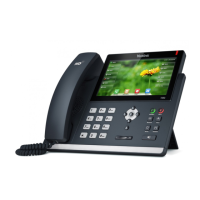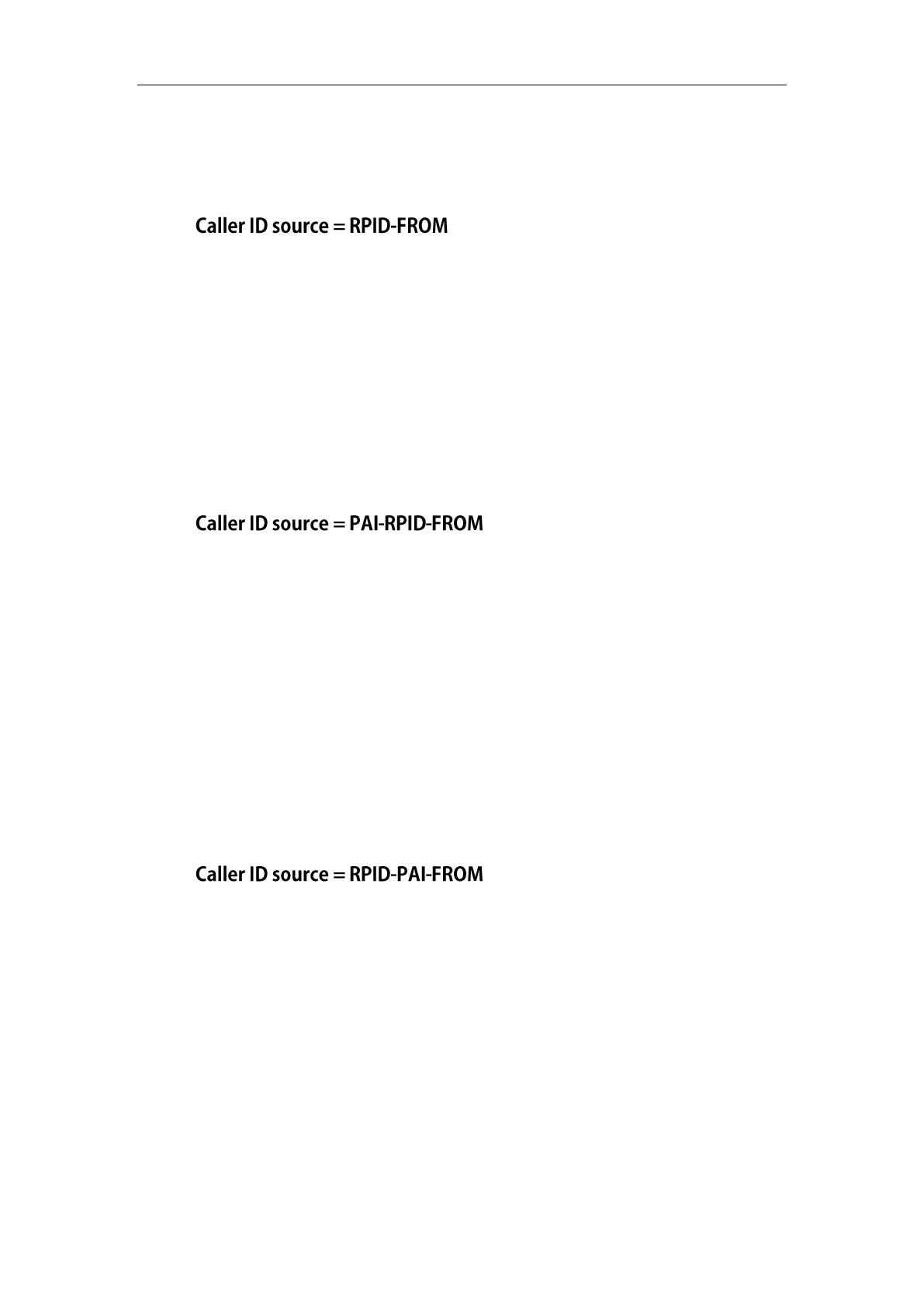Configuring Basic Features
377
and presents the caller identification from the P-Asserted-Identity header.
4) If there is not P-Asserted-Identity header in the INVITE request, the IP phone
presents the caller identification derived from the FROM header.
1) The IP phone checks Privacy: id header preferentially, if there is a Privacy: id in the
INVITE request, the caller identification information will be hidden and the IP phone
LCD screen presents anonymous.
2) If there is not any Privacy: id header in the INVITE request, the IP phone checks and
presents the caller identification from the P-Preferred-Identity header.
3) If there is not P-Preferred-Identity header in the INVITE request, the IP phone checks
and presents the caller identification from the Remote-Party-ID header.
4) If there is not Remote-Party-ID header in the INVITE request, the IP phone presents
the caller identification derived from the FROM header.
1) The IP phone checks Privacy: id header preferentially, if there is a Privacy: id in the
INVITE request, the caller identification information will be hidden and the IP phone
LCD screen presents anonymous.
2) If there is not any Privacy: id header in the INVITE request, the IP phone checks and
presents the caller identification from the P-Preferred-Identity header.
3) If there is not P-Preferred-Identity header in the INVITE request, the IP phone checks
and presents the caller identification from the P-Asserted-Identity header.
4) If there is not P-Asserted-Identity header in the INVITE request, the IP phone checks
and presents the caller identification from the Remote-Party-ID header.
5) If there is not Remote-Party-ID header in the INVITE request, the IP phone presents
the caller identification derived from the FROM header.
1) The IP phone checks Privacy: id header preferentially, if there is a Privacy: id in the
INVITE request, the caller identification information will be hidden and the IP phone
LCD screen presents anonymous.
2) If there is not any Privacy: id header in the INVITE request, the IP phone checks and
presents the caller identification from the P-Preferred-Identity header.
3) If there is not P-Preferred-Identity header in the INVITE request, the IP phone checks
and presents the caller identification from the Remote-Party-ID header.
4) If there is not Remote-Party-ID header in the INVITE request, the IP phone checks
and presents the caller identification from the P-Asserted-Identity header.
5) If there is not P-Asserted-Identity in the INVITE request, the IP phone presents the
caller identification derived from the FROM header.

